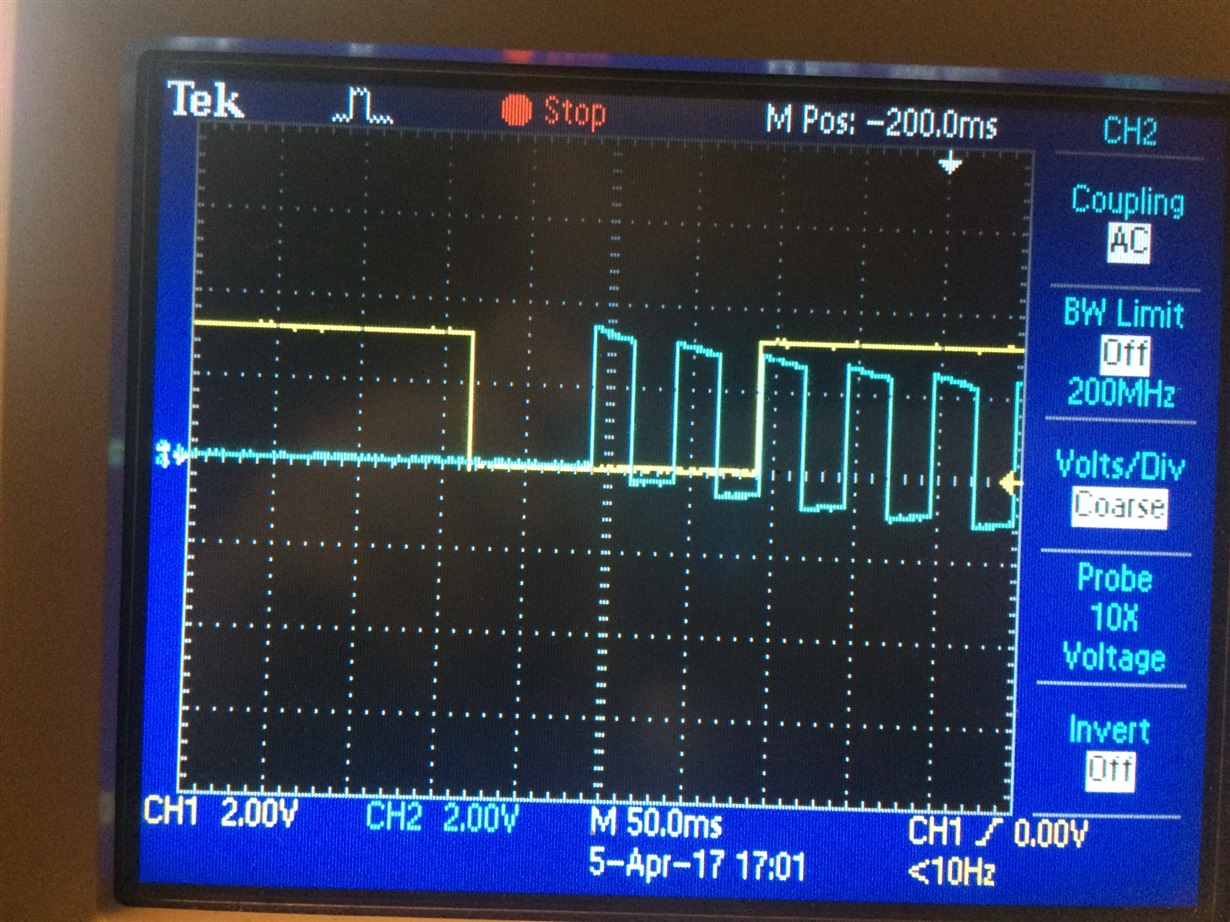Other Parts Discussed in Thread: SYSBIOS
Tool/software: Starterware
Dear,
I put my device into DEEPSLEEP mode successfully. But then I can not recover the problem to work normally.
Could you please help me find out the mistakes?
Here is my code:
static void deep_sleep_mode (void)
{
// Step 1: Active Self-refresh mode to DDR2
// Clear self refresh/low power (SR_PD) bit to 0
HWREG(SOC_DDR2_0_CTRL_REGS + DDR2_MDDR_SDRCR) &= ~DDR2_MDDR_SDRCR_SR_PD;
// Set the low power mode enable
HWREG(SOC_DDR2_0_CTRL_REGS + DDR2_MDDR_SDRCR) |= DDR2_MDDR_SDRCR_LPMODEN;
// Step 2: Disable PHY SATA, USB2.0, USB1.1
// Step 3: put PLL/PLLC0 and PLL/PLLC1 in bypass mode
/*PLLEN = 0 put pll in bypass mode in PLL0 */
HWREG(SOC_PLLC_0_REGS + PLLC_PLLCTL) &= ~PLLC_PLLCTL_PLLEN;
/*PLLEN = 0 put pll in bypass mode in PLL1 */
HWREG(SOC_PLLC_1_REGS + PLLC_PLLCTL) &= ~PLLC_PLLCTL_PLLEN;
// Step 4: Power down PLL 0 and PLL 1
/*PLLPWRDN = 1 in PLL0 */
HWREG(SOC_PLLC_0_REGS + PLLC_PLLCTL) |= PLLC_PLLCTL_PLLPWRDN;
/*PLLPWRDN = 1 in PLL1 */
HWREG(SOC_PLLC_1_REGS + PLLC_PLLCTL) |= PLLC_PLLCTL_PLLPWRDN;
// Step 5: Config DEEPSLEEP pin as Input only
// Config GP0[8] - DEEPSLEEP pin - pin number 9
uint32_t savePinmux = (HWREG(SOC_SYSCFG_0_REGS + SYSCFG0_PINMUX(0)) &
~(SYSCFG_PINMUX0_PINMUX0_31_28));
HWREG(SOC_SYSCFG_0_REGS + SYSCFG0_PINMUX(0)) =
(PINMUX0_GPIO0_8_ENABLE | savePinmux);
// Config this pin as input-only
GPIODirModeSet(SOC_GPIO_0_REGS, 9, GPIO_DIR_INPUT);
// Step 6: Config delay in the SLEEPCOUNT bit (ex: 0x0F)
HWREG(SOC_SYSCFG_1_REGS + SYSCFG1_DEEPSLEEP) |= (0x0F & SYSCFG1_DEEPSLEEP_SLEEPCOUNT);
// Step 7: set SLEEPENABLE bit in DEEPSLEEP to 1
HWREG(SOC_SYSCFG_1_REGS + SYSCFG1_DEEPSLEEP) |= SYSCFG1_DEEPSLEEP_SLEEPENABLE;
// Step 8: polling bit SLEEPCOMPLETE
while (~(SYSCFG1_DEEPSLEEP_SLEEPCOMPLETE &
HWREG(SOC_SYSCFG_1_REGS + SYSCFG1_DEEPSLEEP)))
{
}
// Step 9: Drive the DEEPSLEEP pin low
/***************************EXIT DEEPSLEEP MODE*****************************/
// Step 10: clear SLEEPENABLE bit in DEEPSLEEP to 0
HWREG(SOC_SYSCFG_1_REGS + SYSCFG1_DEEPSLEEP) &= ~SYSCFG1_DEEPSLEEP_SLEEPENABLE;
// Step 11: initialize PLL again
/* Clear PLLRST bit in PLLCTL to 0 */
HWREG(SOC_PLLC_0_REGS + PLLC_PLLCTL) &= ~PLLC_PLLCTL_PLLRST;
HWREG(SOC_PLLC_1_REGS + PLLC_PLLCTL) &= ~PLLC_PLLCTL_PLLRST;
/* Clear PLLPWRDN bit in PLLCTL*/
HWREG(SOC_PLLC_0_REGS + PLLC_PLLCTL) &= ~PLLC_PLLCTL_PLLPWRDN;
HWREG(SOC_PLLC_1_REGS + PLLC_PLLCTL) &= ~PLLC_PLLCTL_PLLPWRDN;
/* Set PLLRST bit in PLLCTL to 1 - out of reset*/
HWREG(SOC_PLLC_0_REGS + PLLC_PLLCTL) |= PLLC_PLLCTL_PLLRST;
HWREG(SOC_PLLC_1_REGS + PLLC_PLLCTL) |= PLLC_PLLCTL_PLLRST;
/* Wait for PLL to lock*/
/* Wait for 300 counts*/
Delay (300);
/*Set the PLLEN bit in PLLCTL to 1 - remove bypass mode*/
HWREG(SOC_PLLC_0_REGS + PLLC_PLLCTL) |= PLLC_PLLCTL_PLLEN;
HWREG(SOC_PLLC_1_REGS + PLLC_PLLCTL) |= PLLC_PLLCTL_PLLEN;
// Step 12: Enable clock DDR
/* Enable clock to SDRAM */
PSCModuleControl(SOC_PSC_1_REGS, HW_PSC_DDR2_MDDR, 0,PSC_MDCTL_NEXT_ENABLE);
/* Set RESET_PHY bit in DDR PHY*/
HWREG(SOC_DDR2_0_CTRL_REGS + DDR2_MDR_DRPYCRC) = DDR2_MDDR_DRPYRCR_RESET_PHY;
/* Clear MCLKSTOPEN bit in SDRCR*/
HWREG(SOC_DDR2_0_CTRL_REGS + DDR2_MDDR_SDRCR) &= ~DDR2_MDDR_SDRCR_MCLKSTOPEN;
/* Disable Self refresh rate */
// clear the low power mode
HWREG(SOC_DDR2_0_CTRL_REGS + DDR2_MDDR_SDRCR) &= ~DDR2_MDDR_SDRCR_LPMODEN;
}
Regards, Nghia Quy


